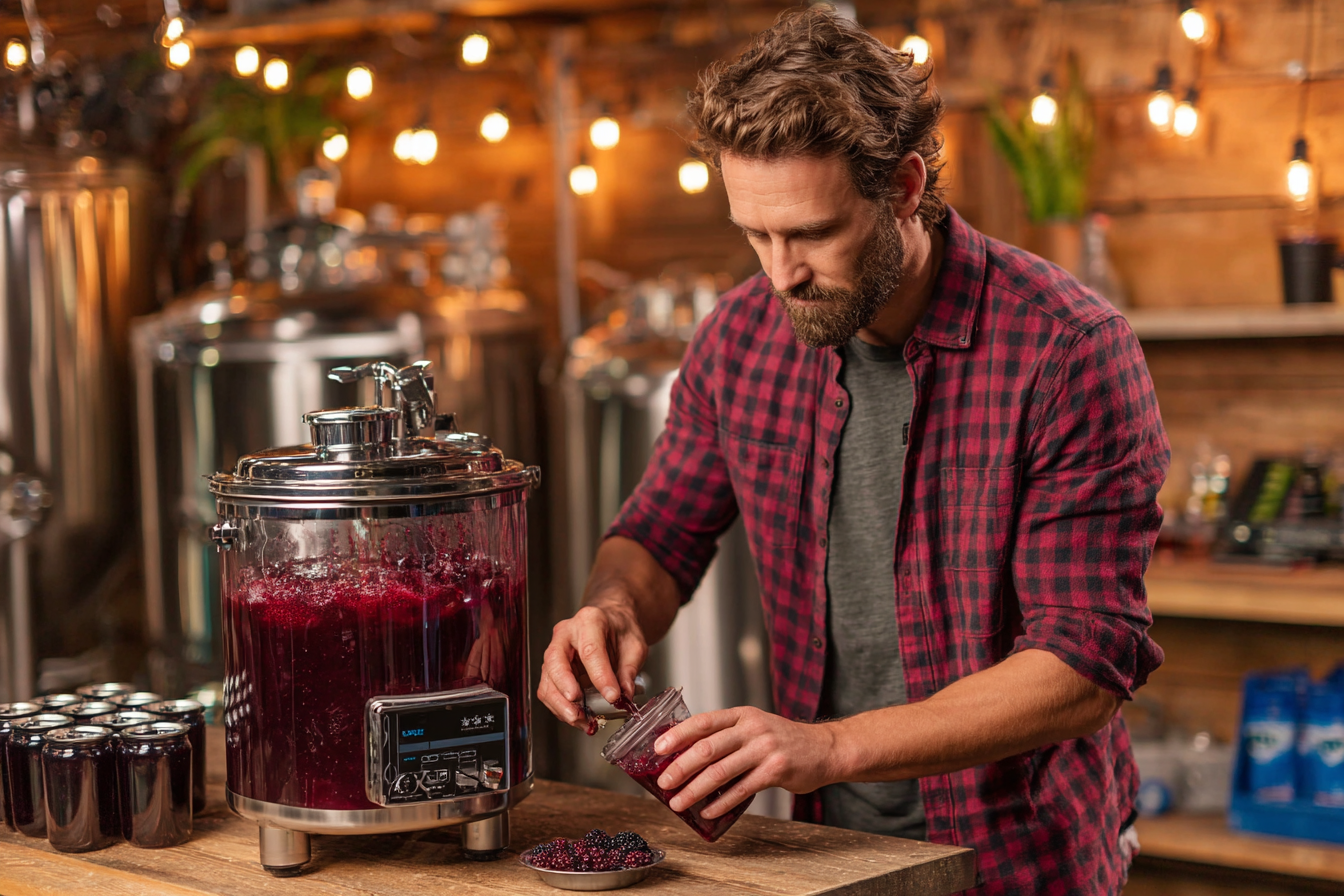Brewing fruit beer at home is an exciting way for beer enthusiasts to experiment with flavors and create unique brews that showcase the freshness and vibrancy of various fruits. Whether you’re aiming for a subtle hint or a bold punch of fruity goodness, the process requires some planning, attention to detail, and a bit of creativity. This guide breaks down essential fruit beer brewing tips to help you craft delicious, well-balanced fruit-infused beers right in your own kitchen or garage.
Introduction to Homebrewing Fruit Beers
Fruit beers have a long history, with traditional styles like Belgian lambics and German Weisse beers showcasing the marriage of malt and fruit. Today, homebrewers have access to countless fruit varieties and beer styles, encouraging creative experimentation. Brewing fruit beer allows you to enhance the aroma, flavor, and complexity of your base beer through natural fruit additions. However, adding fruit introduces new variables compared to traditional grain-based brewing, requiring a good understanding of fruit selection, preparation, and timing to avoid unwanted flavors and fermentation issues.
Choosing the Right Fruits and Beer Styles
Not all fruits pair equally well with every beer style, so choosing complementary flavors is crucial. When selecting fruits, think about the flavor profile you want to emphasize and how well it harmonizes with the malt backbone and hops of your beer.
Here are some popular fruit and beer style pairings:
- Cherries: Excellent in Belgian-style fruit lambics, sour ales, or robust stouts.
- Raspberries and blueberries: Great in wheat beers, Berliner Weisse, and pale ales for a refreshing tartness.
- Peaches and apricots: Work well with blond ales, saisons, and light lagers.
- Citrus fruits (oranges, lemons): Compliment Belgian witbiers and American wheat ales.
- Blackberries: Well-suited for porters, IPAs, and even some brown ales.
When selecting fruits, freshness, ripeness, and seasonality are paramount. Avoid fruit that is underripe, overripe, or moldy, as this can result in off-flavors. Frozen fruit is also a viable option — it’s often picked at peak ripeness and can be stored until you’re ready to brew.
Preparing Fruit for Brewing
Proper fruit preparation ensures you extract the best flavors and avoid contamination issues during fermentation. Most fruits should be cleaned and sanitized before use, but the approach varies depending on the fruit type and how you plan to add it.
- Washing: Rinse fruits gently with clean water to remove dirt and pesticides.
- Freezing: Freezing breaks down cell walls, making it easier for flavors to be extracted during fermentation. Many brewers freeze fruit prior to addition.
- Pureeing or chopping: Smaller pieces or pureed fruit provide more surface area, leading to better flavor extraction. However, too fine a puree can cause clarity issues.
- Sanitizing: Since fruit can carry wild yeasts and bacteria, some brewers soak fruit in a sanitizing solution or add campden tablets (potassium metabisulfite) to the fermenter with the fruit to mitigate infection risk.
Keep in mind that large amounts of fruit add sugars, so you may need to adjust the base gravity of your beer recipe accordingly.
Best Timing for Fruit Addition
When you add the fruit to your beer impacts both the flavor profile and the fermentation process. There are two common approaches:
- Primary fermentation addition: Adding fruit at the beginning or early stages of fermentation can lead to more thorough fermentation of fruit sugars, resulting in a drier beer with subtle fruit notes. However, some delicate aromas may be lost.
- Secondary fermentation or conditioning addition: Adding fruit after the vigorous primary fermentation has subsided helps preserve bright, fresh fruit flavors and aromas. This can be done in a secondary fermenter or during bottle conditioning.
Most homebrewers prefer adding fruit during secondary fermentation or conditioning for better aroma retention and control over the final flavor. Whichever method you choose, monitor fermentation carefully after fruit addition since the additional sugars can cause renewed activity.
Avoiding Common Pitfalls and Off-Flavors
Fruit beers can be prone to common off-flavors and issues if care isn’t taken. Here are some pitfalls to watch out for:
- Infection risk: Fruits naturally carry wild yeasts and bacteria, which may cause sourness or off-flavors if your brew isn’t properly sanitized.
- Clarity problems: Pectin in fruits can cause haze or gelatinous textures. Using pectic enzyme during brewing helps break down pectin and improves clarity.
- Overpowering flavors: Adding too much fruit can overwhelm the beer’s base character. Start with smaller quantities and adjust in future batches based on taste.
- Excessive sweetness or dryness: Balancing fermentable sugars from fruit with malt and yeast fermentation is key to avoid overly sweet or thin beers.
- Oxidation: Introducing fruit late can add oxygen to your beer, which can cause stale, cardboard-like flavors. Use careful transfer techniques.
Fermentation Monitoring and Adjustments
When using fruit, it’s crucial to monitor your fermentation closely. Fruit sugars can cause a secondary fermentation spike, sometimes delaying the completion of fermentation or causing overpressurization in sealed vessels.
Some tips to keep your fermentation on track:
- Take gravity readings regularly after fruit addition to track fermentation progress and avoid bottling too early.
- If fermentation restarts vigorously, ensure your fermenter has adequate airlock space or consider burst-opening to release excess CO2 safely.
- Adjust temperatures as needed since some yeast strains ferment fruit sugars better at cooler or more controlled temperatures.
Using yeast strains known for fruit-forward esters and good attenuation can also enhance the final product.
Bottling and Storage Tips
Fruit beers can be more delicate and prone to flavor changes over time, so proper bottling and storage practices are essential to preserving quality.
- Sanitation: As always, ensure bottles, caps, and bottling equipment are well sanitized to prevent contamination.
- Priming sugar adjustments: Since fruit adds fermentable sugars, adjust your priming sugar to avoid overcarbonation or bottle bombs.
- Use strong bottles: High pressure due to continued fermentation of fruit sugars means using sturdy bottles (e.g., champagne bottles or thick glass) is advisable.
- Storage conditions: Store your bottles in a cool, dark place to slow oxidation and flavor degradation.
Troubleshooting and Final Thoughts
Fruit beer brewing can be highly rewarding but may present occasional challenges. Here are solutions to some common issues:
- Cloudy or hazy beer: Try using pectic enzyme and longer cold conditioning to improve clarity.
- Off-flavors (sourness, funky aromas): Check sanitation and fruit freshness, and consider using campden tablets if wild yeast contamination occurs.
- Flat beer: Adjust priming sugar and allow enough bottle conditioning time; check for yeast viability.
- Excessive sweetness: Use higher attenuation yeast or increase base malt content to balance fruit sugars.
Most importantly, document your process and tasting notes to refine your recipes and techniques for future batches. Fruit beer brewing is an art as much as a science, and experimenting with different fruits, timing, and methods can lead to truly unique brews.
With these tips in hand, you’re well-equipped to embark on your own fruit beer brewing adventures. Enjoy the process, the creativity, and most of all, the delicious results!







